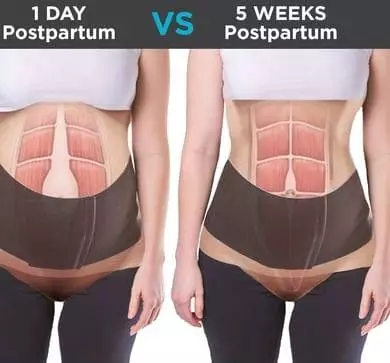Proving true to its name, IMC hospital takes pride in providing the best healthcare services to its patients through a truly integrative and collaborative approach between all relevant departments. Dr. M. Sheraz Raza is an internationally renowned plastic surgeon practicing at IMC. Throughout his career, he has helped hundreds of patients achieve a healthy lifestyle by providing them with services that are beneficial for them both cosmetically and healthwise. Some of his notable services include liposuction, breast reshaping and reduction, double chin removal and coolsculpting. Through an integrated approach, the physical therapy department works in close coordination with Dr. Sheraz’s patients, to help them regain their muscle tone and strength, reduce their lymphedema and enable them to enjoy their life to the fullest.

If you suffer from or know someone who suffers from the ever dreadful, mommy pooch, you are at the right place. Are you exasperated at that stubborn, flabby little overhanging tummy pouch that just won’t go away no matter what diet or exercise you follow? Physiotherapy might just be the perfect answer for you. This mommy pooch is a result of muscle separation and fat gain in pregnancy due to normal physiological changes.
Some newborn babies, especially if born premature, also have diastasis because their abdominal muscles are not fully developed, but it corrects itself over time.
The belly muscles called the rectus abdominis or commonly known as the abs, are two muscles that connect at the centre of the belly by a thin band like fascia called the linea alba. When the belly muscles get stretched, the linea alba elongates as well and does not always come back to its original elasticity and strength. As a result, the left and right belly muscles remain separated and the internal organs like the uterus and bowels, only have this thin band holding them in place. Without correction and proper strengthening, simple routine activities can cause excessive strain, leading to hernias. It can also make vaginal birth difficult and risky. Breathing patterns can be affected due to impaired biomechanics and complaints of persistent back pain as well as constipation are commonly reported. Weak abdominals also cause impaired postural and trunk control leading to lumbopelvic pain and weak pelvic floor muscle contraction.

Straining activities like lifting weight including kids, crunches, sit-ups, press-ups, planks, constipation and even sitting down and standing up make the muscle separation worse.
The diastasis is usually measured by placing fingers horizontally deep down into the centre of the belly and is measured at 3 points- above the level, at the level and below the level of the belly button. More than 2 fingers width diastasis is considered clinically significant.
Some newer studies suggest that the depth of the diastasis is more clinically important than the width of the separation.
There are a number of ways to correct this condition. The most popular is the Tupler technique in which the transversus abdominis muscle is strengthened with muscles splinted and the patient is taught proper form for getting up and down. 18 weeks of regular exercise are usually required for correction and strengthening. In rare cases, where the condition does not get corrected even after 6 months of regular physical therapy, patients might be referred for abdominal surgery.,



